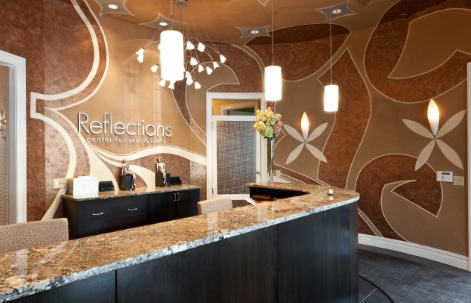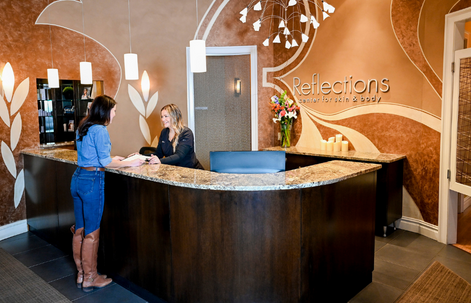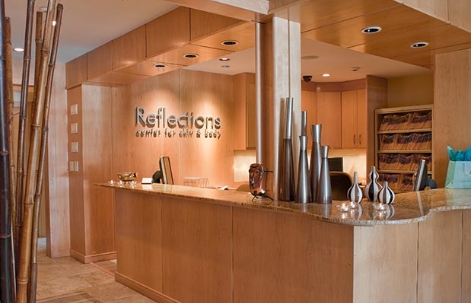Volume loss affects both fat and bone tissue. The aging process first affects fat content, then later bone structure. This is why we inject dermal fillers at different depths: low to treat loss of bone volume, and more superficial to treat natural fat loss.
Why Deflation Looks Like Sagging
The effects of volume loss aren’t just the appearance of hollow areas under the eyes or in the cheeks. As tissue is lost higher up in the face, skin is pulled down by gravity to create aging signs like jowls that people commonly think they need a facelift or neck lift to solve, but which may actually be helped more efficiently with re-volumnization.
When Does Skin Actually Start to Sag? And When Do Muscles Need a Facelift Surgery to Look Lifted and Youthful?
Along with volume loss, the skin begins to lose elasticity as early as your 30s, beginning to stretch slightly and making the signs of aging caused by volume loss worse. However, for many people who have taken good care of their skin, avoided excess sun damage, protected their skin with antioxidant-rich diets and skincare products, and who do not smoke, skin laxity won’t be too much of a problem until more like their 50s.
People can be proactive in helping their skin stay as tight and firm as possible by using treatments generally referred to as “skin tightening” treatments.
How We Correct Facial Deflation: Our Comprehensive Approach To Natural Anti-Aging Results
Step 1: Replace Lost Volume
As mentioned, the most visible early signs of aging are caused by fat and bone volume loss. This is why any facial rejuvenation treatments performed on people with these early concerns will typically start with dermal fillers or fat transfer. This is a way to get the structure of the skin back to a more youthful appearance and allow us to see what other treatments may need to be done in addition to this. Without improving facial volume, other treatments will not be as effective.
Step 2: Stop Damage That Causes Wrinkles, Lines, Folds, And Volume Loss
The key to preventing premature facial aging is to protect the skin from the damage it faces from three key sources:
- Repetitive facial movements – Botox stops muscles from creating new wrinkles
- Sun and free radical damage – UV rays and free radicals damage skin cells at a molecular level, causing multiple signs of aging
- Daily habits and lifestyle – Changing the way you sleep can actually help prevent some wrinkles.
Step 3: Rebuild And Repair Collagen And Skin Quality
You start to lose collagen, a key protein to skin elasticity and structure, as early as age 20, with the rate of loss increasing as you age. To help rebuild your collagen stores as well as treat issues that may have already arisen, such as pigmentation or disorders like keratoses, we recommend several types of treatment:
- Collagen induction therapies – restore your skin’s elasticity and strength with collagen-stimulating dermal fillers like Sculptra or Radiesse, or with treatments like Ulthera, Thermage, Sofwave, Exilis Ultra, or ThermiSmooth, depending on your needs and skin type.
- Laser skin treatments – our wide array of cosmetic lasers allow us to treat many skin disorders and damage, such as sun spots and various skin disorders.
- RF microneedling and CO2 lasers – improve your skin at all its layers with tailored treatments that can selectively target the upper layers of skin for improving texture, pore size, and fine lines, as well as its deeper layers for collagen stimulation, acne scar treatment, and deeper wrinkles.
Step 4: Lifting & Tighten Loose Skin & Muscles
Only after the underlying causes of skin laxity, volume loss, and damaged skin are addressed do we move on to tightening and lifting the skin and muscles to ensure your results are not overdone or ineffective. There are a few patients who come in who don’t have the significant volume loss and therefore don’t require a lot of filler, but when people come in looking for “skin tightening” for their problem areas, we always follow these steps to address it before jumping straight to skin and muscle tightening procedures.
Although it seems daunting, we often perform all these steps in a single day unless your specific plan requires differently or you’d prefer to stage them out over time.
Step 5: Enhance and Augment Attractiveness
Once we’ve successfully restored a youthful structure and skin tone, we can talk about tweaking your look through subtle but noticeable changes to slightly enhance the size of your lips, for example, or adjust the nose profile for a more harmonious appearance. Skipping the previous four evaluations and treatments and going straight for procedures like a liquid nose lift often results in a dis-proportionate appearance, as the aging signs throughout the face haven’t been addressed, so your results from these tweaks won’t be in balance. By following this process, our doctors ensure your results are as natural-looking and effective as possible.
If you have concerns about specific areas of your face, or simply want to look more like your younger self, our cosmetic physicians can help. Call or contact us online to schedule your free consultation with them and find out how we can help you achieve your aesthetic goals.









